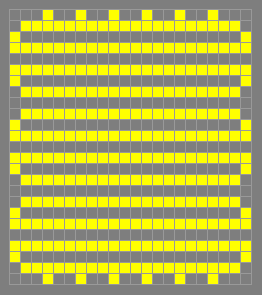Any stable pattern, usually assumed to be finite and
nonempty. For the purposes of enumerating still lifes this
definition is, however, unsatisfactory because, for example, any pair
of blocks would count as a still life, and there would therefore be
an infinite number of 8-bit still lifes.
For this reason a stricter definition is often used, counting a
stable pattern as a strict still life only if its islands cannot
be divided into two or more nonempty sets both of which are stable in
their own right. If such a subdivision can be made, the pattern can
be referred to as a constellation. If its cells form a single
cluster it is also, more specifically, either a pseudo still life
or a quasi still life.
In rare cases above a certain size threshold, a pattern may be
divisible into three or four stable nonempty subsets but not into
two. See the 32-bit triple pseudo (32 bits) and the 34-bit
quad pseudo for examples.
All still lifes up to 18 bits have been shown to be
glider constructible. It is an open question whether all still
lifes can be incrementally constructed using glider collisions. For
a subset of small still lifes that have been found to be especially
useful in self-constructing circuitry, see also Spartan.
The smallest still life is the block. Arbitrarily large still
lifes are easy to construct, for example by extending a canoe or
barge. The maximum density of a large still life is 1/2, which can
be achieved by an arbitrarily large patch of zebra stripes or
chicken wire, among many other options. See density for more
precise limits.










